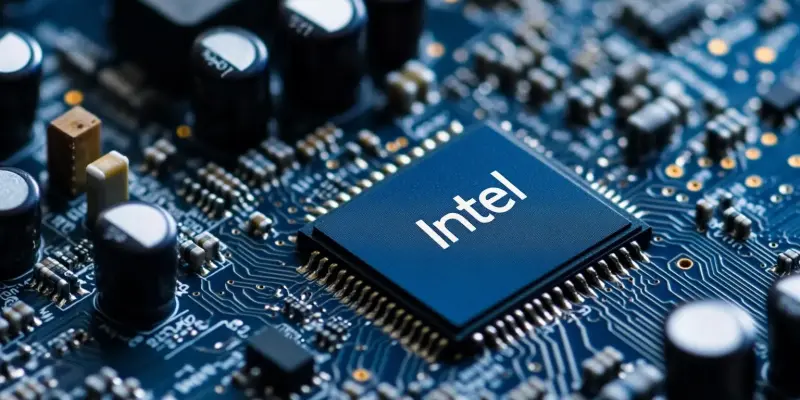Intel has introduced its highly anticipated Core Ultra 300 series processors during the recent Embedded World 2025 event. The next-generation client CPU, known as Panther Lake, has garnered significant attention with groundbreaking technologies and architectures. Among the advancements showcased are the integration of new CPU and GPU architectures, with notable features including Xe3 “Celestial” GPU cores. These innovations highlight Intel’s commitment to pushing the boundaries of computing power and efficiency.
Advancements in Performance and Efficiency
One of the standout presentations at Embedded World was the Panther Lake-H version, which demonstrates a configuration of up to 4 Performance Cores (P-Cores), 8 Efficiency Cores (E-Cores), and 4 Low Power Cores (LP-Cores). This model also incorporates Cougar Cove and Skymont cores, along with an impressive total of up to 12 Xe3 GPU cores. These specifications mark a significant leap in computational power, catering to demanding applications and various user needs. Panther Lake’s key specifications include a maximum of 16 CPU cores, 12 Xe3 GPU cores, and 12 PCIe 5.0 lanes. Additionally, it offers support for up to 180 AI TOPS, emphasizing Intel’s drive to enhance artificial intelligence capabilities.
Intel has confirmed the use of its 18A node, PowerVia, and RibbonFET technologies in the Panther Lake series. These technological advancements are slated for mass production in the second half of this year, aligning with the upcoming release of new gaming laptop variants that will feature increased PCIe lanes. The combination of these features ensures that the Core Ultra 300 series will deliver top-tier performance and energy efficiency, making it a formidable competitor in the technology market.
Variants and Compatibility
The different variants of Panther Lake, such as Panther Lake-U and Wildcat Lake, showcase distinct core configurations and GPU capabilities tailored to meet various laptop segments. Panther Lake’s support for Thunderbolt 4, LPDDR5x, and DDR5 memory further enhances connectivity and memory performance, providing users with a seamless computing experience. The detailed breakdown of the flagship Panther Lake-H variant reveals an impressive capability of achieving up to 100 AI TOPS. This configuration strikes an exceptional balance between CPU, GPU, and NPU performance, making it suitable for a wide range of tasks from gaming to professional applications.
Comparing the Panther Lake-H variant with others highlights Intel’s strategic approach to catering to different market segments. While Panther Lake-H targets high-end performance with its extensive core configuration and GPU power, other variants like Panther Lake-U and Wildcat Lake offer optimized configurations for ultra-portable and productivity-focused laptops. This comprehensive range of options allows Intel to address diverse consumer and professional demands, reinforcing its competitive edge in the CPU market.
Conclusion: A Significant Leap Forward
Intel unveiled its eagerly awaited Core Ultra 300 series processors at the recent Embedded World 2025 event, drawing significant attention from industry experts and consumers alike. This next-generation client CPU, dubbed Panther Lake, promises to revolutionize computing with its groundbreaking technologies and innovative architectures. One of the standout features of these new processors is the integration of cutting-edge CPU and GPU architectures, which include the impressive Xe3 “Celestial” GPU cores. These cores are designed to enhance graphics performance significantly, bringing a new level of efficiency and power to the table. This unveiling underscores Intel’s relentless commitment to advancing the frontiers of computing power and efficiency. The introduction of these processors not only reflects Intel’s ongoing dedication to innovation but also sets a new standard for the industry. The Core Ultra 300 series aims to meet the growing demands for enhanced performance in various applications ranging from gaming to professional workloads.

